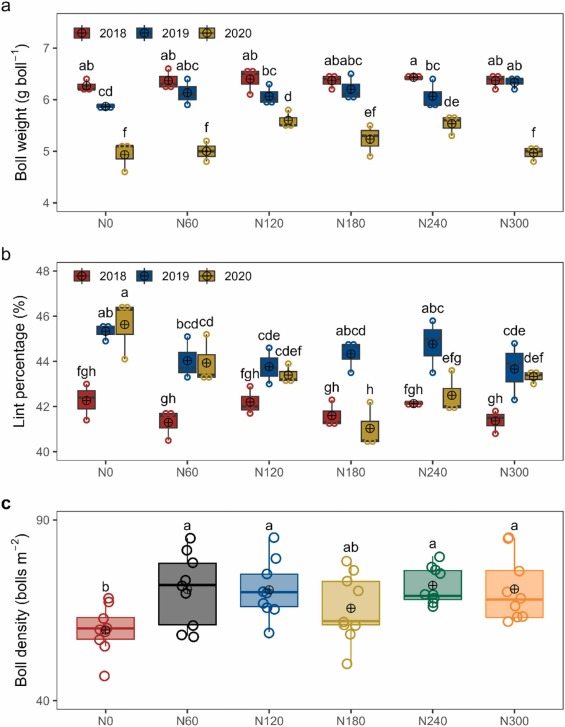- Location : Home» Newsroom
Optimizing nitrogen management to reconcile cotton yield and yield stability: A three-year field study
Simultaneously increasing yield and yield stability are of critical importance to achieving sustainable cotton (Gossypium hirsutum L.) production. Yield stability (invariability in time) varies with weather, site-specific soil conditions and agronomic managements, e.g., nitrogen (N) supply. However, little systematically focused on the importance of the abovementioned factors. Here, we aim to assess the relative impact of N on cotton yield stability and identify the main drivers of yield variation using a three-year field experiment that consisted of six N supply rates that ranged from 0 to 300 kg ha-1. Cotton yield variation was evaluated by temporal stability (TS) and sustainable yield index (SYI). Results showed that cotton yield and yield components both varied with N rate and year. N rates that too high or too low were not conducive to cotton yield stability. Specially, 227 kg N ha-1 produced the maximum yield while the maximum TS and SYI were recorded at 120 kg N ha-1, suggesting an obvious trade-off between cotton yield and yield stability. Soil nutrient contents varied slightly with N rates, while they generally decreased over time. Path analysis showed that weather-related factors, N supply and soil nutrients together explained most of the cotton yield variation. Additionally, among weather-related factors, temperature during the growing season was the key driver of yield variation, followed by precipitation and photosynthetically active radiation. Alkali-hydrolyzale N in the soil layer of top 0.6 m was the most important soil attribute to positively determine cotton yield, followed by Olsen phosphorus and soil organic carbon. Overall, our study provided insights into evidence-based N management strategies design under site-specific conditions to improve the sustainability of agricultural production.
This work was financially supported by the Agricultural Science and Technology Innovation Program of Chinese Academy of Agricultural Sciences, the earmarked fund of China Agricultural Research System of MOF and MARA (CARS-15-11) and the Science and Technology Planning Project of Xinjiang (2022013). We thank Dr. Xiao-Fei Li for the pre-submission review and editing of the manuscript and all the members for their help.
